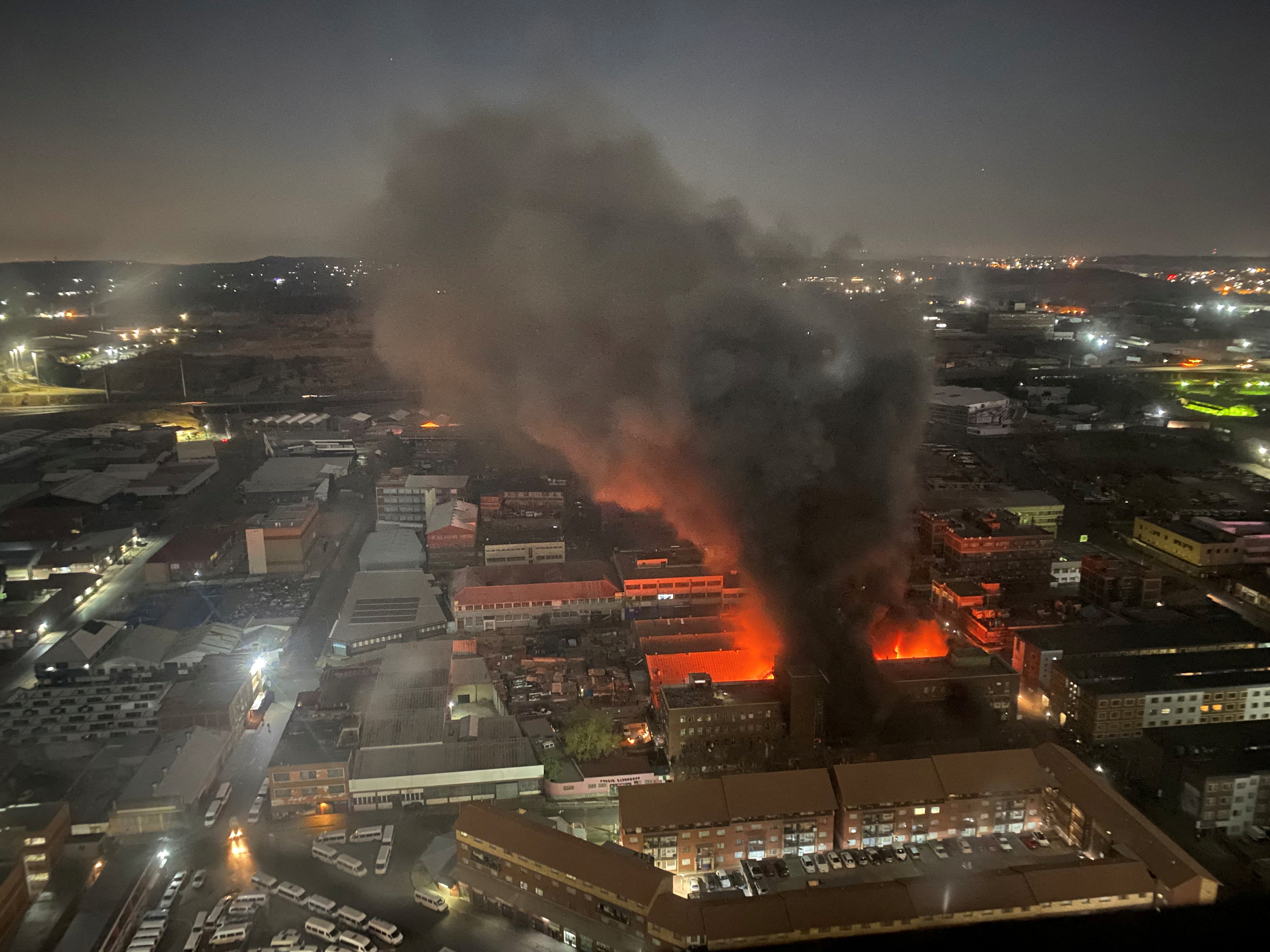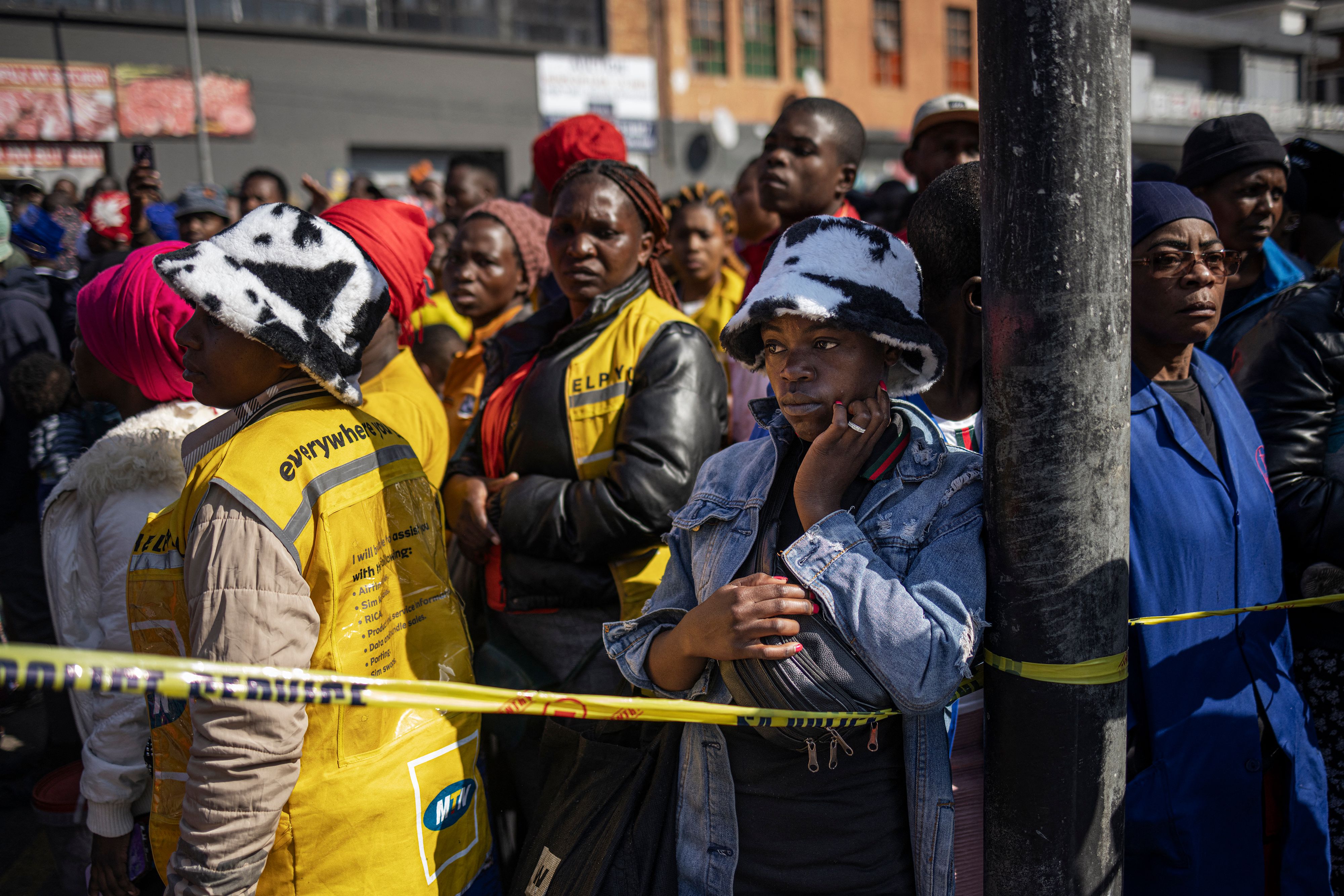Johannesburg fire kills at least 74, including 12 children, as blaze sweeps derelict building
Tower was once the site of South Africa’s notorious apartheid-era ‘pass’ office
Your support helps us to tell the story
From reproductive rights to climate change to Big Tech, The Independent is on the ground when the story is developing. Whether it's investigating the financials of Elon Musk's pro-Trump PAC or producing our latest documentary, 'The A Word', which shines a light on the American women fighting for reproductive rights, we know how important it is to parse out the facts from the messaging.
At such a critical moment in US history, we need reporters on the ground. Your donation allows us to keep sending journalists to speak to both sides of the story.
The Independent is trusted by Americans across the entire political spectrum. And unlike many other quality news outlets, we choose not to lock Americans out of our reporting and analysis with paywalls. We believe quality journalism should be available to everyone, paid for by those who can afford it.
Your support makes all the difference.At least 74 people have been killed and dozens more injured after a fire ripped through a building in Johannesburg – one of the deadliest blazes in South Africa’s history.
At least 12 of those killed were children, the youngest, a one-year-old, according to city and medical officials. They said an undetermined number of people were still missing and many bodies recovered were burned beyond recognition. The building had been abandoned but was being occupied by homeless people.
Some people threw babies out of third-floor windows to others waiting below in the desperate scramble to evacuate, witnesses said.
Around 60 people were injured, six of whom were in a serious condition in the hospital. Emergency services officials had earlier warned that the death toll could rise as they continued to search the scene.
Dozens of bodies recovered by firefighters were laid out on a side road outside the apartment block, some in body bags.
“Over 20 years in the service, I’ve never come across something like this,” Johannesburg Emergency Services Management spokesperson Robert Mulaudzi said.
Firefighters were still making their way through the remnants of shacks and other informal structures that littered the inside of the derelict five-story building in the heart of Johannesburg’s central business district hours after the fire was extinguished
Authorities hadn’t established the cause of the fire but Mgcini Tshwaku, a local government official, said the initial evidence suggested it started with a candle. Inhabitants used candles and fires for light and to keep warm in the winter cold, he said.

Some of the survivors described how they jumped out of windows, but only after tossing their children to others below.
A witness who lives in a building across the road said he saw others also throw babies out of the burning building and that he saw at least one man jump from the third floor and hit the concrete pavement “head first”.
Another witness who didn’t give his name told television news channel eNCA that he lived in a building next door and heard people screaming for help and shouting, “We're dying in here.” As the fire raged, some occupants got trapped behind locked gates at the exits and it was clear there were no proper fire escape routes, the local official Mr Tshwaku said. “People couldn’t get out,” he said, adding that some of the victims may have died after jumping out of the building.
More than 200 people were living in the building, witnesses said, including in the basement, which should have been used as a parking garage. Others estimated an even higher number of occupants.
Johannesburg mayor Kabelo Gwamanda said 141 families were affected by the tragedy but could not say exactly how many people were in the building when the fire started. Many of the people inside were foreign nationals, he said. That could make identifying victims and tracing the missing hard as many were likely in South Africa illegally, other officials said, and had no South African documents.

Abandoned and broken-down buildings are common and people desperate for some form of accommodation use them for shelter. City authorities refer to the structures as “hijacked buildings” and they have been a problem for years, if not decades.
Officials initially suggested the building had been occupied by squatters, but Lebogang Isaac Maile, the head of the Human Settlements department for Gauteng province, which includes Johannesburg, said some of those who died may have been renting from, or were being extorted by, criminal gangs.
“There are cartels who prey on who are vulnerable people. Because some of these buildings, if not most of them, are actually in the hands of those cartels who collect rental from the people,” he told reporters.
“This is a great tragedy felt by families whose loved ones perished in this terrible manner,” President Cyril Ramaphosa said in televised remarks. “I do hope that the investigations into the fire will ... prevent a repeat of such a tragedy.”
The building was reportedly owned by the city of Johannesburg and is considered a heritage site, but was not being managed by the city. It was once the site of South Africa’s notorious “pass” office, which controlled the movement of Black people under the racist system of apartheid, according to a blue historical plaque hanging at the entrance.
“Denied a place in the city, many were ordered to leave Johannesburg,” the plaque reads.
Decades later, the deadly fire made the building a modern emblem of the exclusion of poor people in Johannesburg.
Gauteng province police commissioner, Lt Gen Elias Mawela, said police were aware of approximately 700 buildings in central Johannesburg that were derelict and abandoned. He urged city authorities to act and to bar squatters from the burned building in the future.
Associated Press

Join our commenting forum
Join thought-provoking conversations, follow other Independent readers and see their replies
Comments